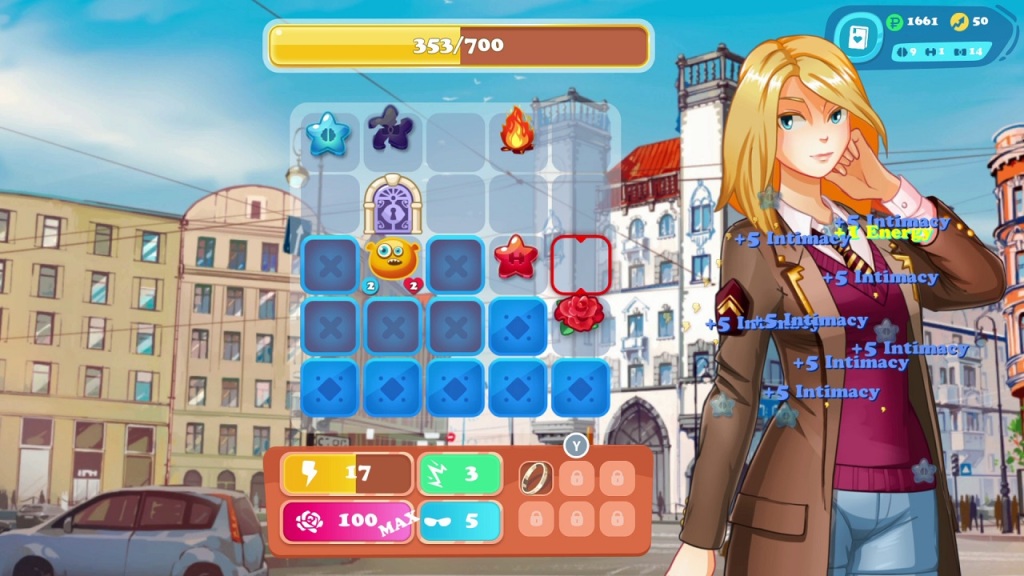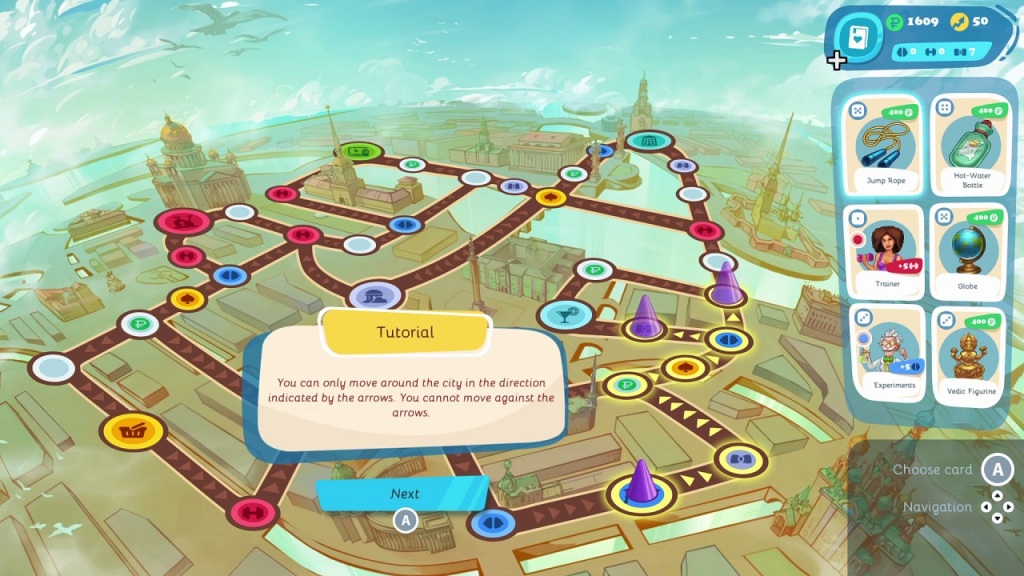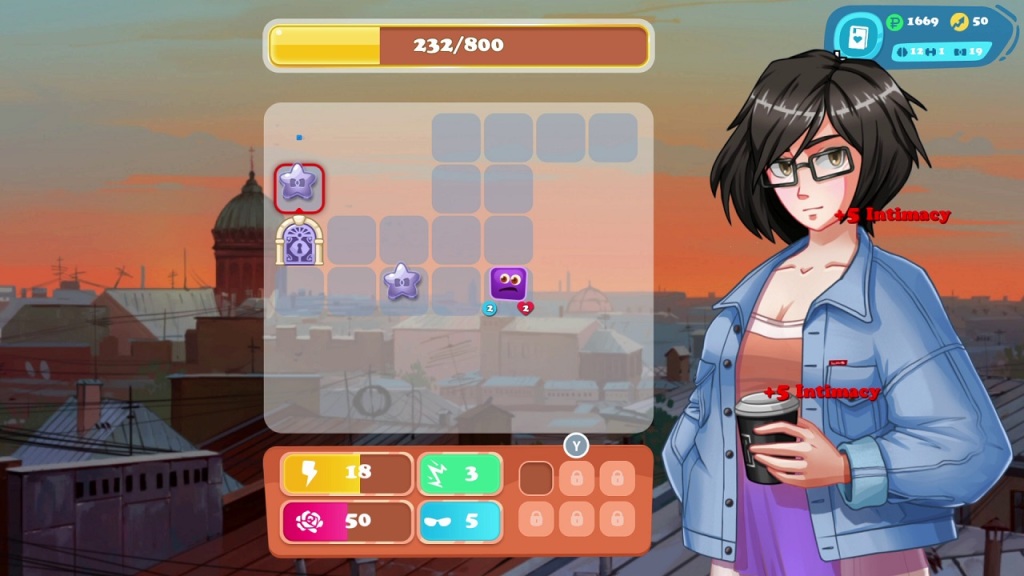Quick Look: DateJournal (Nintendo Switch)
14/06/2024 Leave a comment

Originally released onto Windows PC (via Steam) the boarding game styled puzzle themed dating game DateJournal finds a new home on Nintendo Switch, PlayStation 4 and PlayStation 5; but today we’ll be taking a quick look at the Nintendo Switch version to see what it has to offer.
Published by Sometimes You, and developed by Penciltape Games, DateJournal is advertised as a dating simulation game with puzzle themed elements, but it’s actually something a little bit different. Traditional dating simulation games, like those found within Japanese visual novels, feature a story and make you invested in the character you are representing, the world they reside within, and the characters you interact with. Here, it’s just thrown in your face and see what sticks. There’s no backstory, no world building, no developing relationship, it’s simply ask (or answer) questions to gain points before being thrown into a minesweeper type puzzle game in hopes of increase your romance level with the character.

As as an example, as soon as you start the game (which begins by asking whether you are a male or female that serves no relevance to the game content) you are thrown into a conversation with Vasilisa, and are immediately tasked with swooning her by answering questions. Correctly answering questions will increase heart points while incorrect answers yield no punishment. After several questions you’ll then be forced to “date” her which then starts a minesweeper styled puzzle game.
The aim here is to collect enough star pieces to pass the level, while also collecting roses to increase your intimacy, with the target score being displayed at the top of the screen. The challenge is that you must do this within a set number of moves, indicated by the thunder icon, and avoid broken star pieces and monsters. Picking up a broken star pieces will decrease your star score, thus making it difficult to complete the level, while attacking monsters will decrease your move count even further. Additionally, these puzzles take place over multiple puzzle boards, and a key will need to be found (and used on the door) in order to progress to the next puzzle board.

It’s not exactly minesweeper, but the principle of clearing the board is the same, and there is an element of challenge to it as you not only have a limited number of moves but you can also collect and use power-ups. The first stage of each character is relatively simple, but as you progress you’ll learn that you won’t have enough moves (or power-ups) to complete the level. This is where upgrading your characters stats is required, and it is here where the game becomes a little bit more bizarre.
After the initial conversation and puzzle at the start of the game, which serves as your tutorial to the key gameplay, you’ll then be introduced to the main hub world. This hub world is a presented as a “game of life” styled board game, where the player takes turns to move around the board. Ironically the only player playing this “game of life” is you, but each turn passed will ultimately see things change on the board. On the right hand side of the screen is a selection of cards, with these drawn at the start of each turn. These cards serve a dual purpose, with them being usable to move on the board and to send gifts to potential love interests for a slight increase in points. Naturally depending on where you land on the board depends on what happens.

Most locations on the board do not do anything, but there are set locations (which feature icons on them) that will do various things. Landing on a green money icon will give you money, something which is needed to send gifts to potential love interests, while landing on the red weight symbol will grant you the option of upgrading your characters stats. Other locations include quizzes and random chance guessing games, of which can be difficult to win at. Of course if you do land on a love interest then you can proceed to have a conversation with them or start a date (which in turn begins the puzzle game).
It’s at this point you’ll realize how over-complicated this game is becoming… and that’s before you even consider the most unfriendliest user interface you’ve ever encountered. The user interface on the game board is not only confusing, but it occasionally breaks, and It doesn’t help that text is incredibly small when playing in handheld mode. Of course with trial and error you’ll soon discover how to use it.

From this point onward DateJournal enters a repetitive gameplay cycle of where you will move around the board in search of your next love interest and building your stats to make levels easier. Once you land on a love interest, you’ll ask (and answer) questions before proceeding into the puzzle game. Rinse and repeat this process five times on the same character and, if done correctly, you’ll be treated to a static ending with that character. Be warned, these ending sequences are adult-themed (more so than I was expecting) with images of nudity and descriptions of sexual acts. It is a complete tone-shift from what I had experienced so far, and even though the game is rated PEGI 18 it still came as a surprise.
Tone aside; this process is the same for each of the characters you encounter, albeit some characters focus on Intimacy rather than Love, and while these characters do have their own unique personalities on screen they are all completed (swooned?) in the same way. More importantly, unlike traditional dating sims which have a sense of progression with the character you are interacting with, there is none here. For instance, my first encounter with one character saw the conversation lead directly into a sexual nature with no real introduction. It’s like the game has a pool of dialogue, questions and answers and presents them to you at random whenever you encounter that character.

So what exactly is DateJournal like and how is it played? Put simply DateJournal is a puzzle game with dating sim elements with the aim of the player to achieve the different ending with all of the characters. Visually it is cartoonish, almost child-friendly, and takes inspiration from Japanese visual novels and hyper-causal mobile games for its gameplay, but ultimately it is an adult themed game.
When I played the demo I enjoyed what it offered, even if it felt rough around the edges, but the full game doesn’t offer much more (in terms of gameplay at least) and instead continues down a never-ending-road until you ultimate reach its conclusion, or get bored. It’s not the dating simulation I was expecting, nor is it a good one, but it exists and some elements of the game are kind of fun. Would I recommend it? Not exactly, instead i’d suggest playing the demo and take your decision from there.
DateJournal is available digitally for Nintendo Switch, PlayStation 4, PlayStation 5 and Windows PC.
A demo is also available to download from the relevant digital storefronts.
Disclosure: I received a free review copy of this product via Keymailer.
#DateJournalConsoles datejournalconsoles


